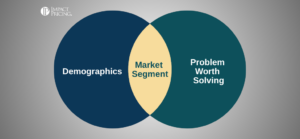You can listen to the full audio version of this blog we call — Blogcast.
You may have seen that Southwest Airlines is about to abandon its no-assigned-seats policy. My guess is you have an emotional reaction to this news. But let’s use this news to examine the trade-off they have to make from a pricing and value perspective.
Southwest is the only major carrier I know of that doesn’t assign seats. This is part of their differentiation. There is no first-class section you have to walk through when boarding. The boarding process is efficient, and once you’re used to it, it’s more fun than when boarding on the other airlines. Some people choose to fly Southwest in part because of their boarding experience.
To be fair, I hate it. I’m spoiled. I have status on a major air carrier and often get upgraded. And when I don’t, I get a little more legroom in a premium seat. But that’s what differentiation is about. Some people prefer one thing. Other people prefer something else.
Southwest is about to give up this high-level differentiation. What will they get in return? They will derive the ability to do segmentation within a flight. They will be able to sell first-class and premium seats at an upcharge. Bob Jordan, the CEO of Southwest, claims this could bring in more than $1 billion in incremental revenue. And since it barely changes their cost structure, it’s almost all profit.
I’m sure it’s not an easy decision, nor one that was taken lightly. Southwest is giving up a high-level differentiator to enable more granular segmentation.
What can you learn from this? Most companies have opportunities for more granular segmentation without making a huge brand change. Southwest thinks this is so profitable, they are willing to take the brand hit. But your company can probably do something similar without the brand hit. Are you? The trick is to look for buyers who are willing to pay more and craft a product portfolio that gives them a little more to justify their higher price.
Share your comments on the LinkedIn post.
Now, go make an impact!
 Tags: pricing, pricing strategy, pricing value, strategies
Tags: pricing, pricing strategy, pricing value, strategies













